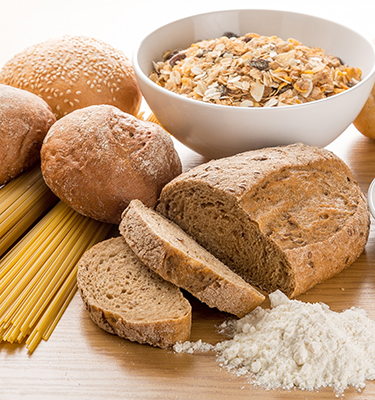
What is Celiac Disease?
Often mistaken as a food allergy, celiac disease is a genetic disorder where individuals have an immune system reaction to gluten, a protein found in wheat, rye and barley (see our discussion about oats). Gone undetected and untreated, celiac disease can lead to damage of the small intestine and eventually malnourishment.
How is it treated?
For celiac disease, diet truly is the only treatment. Preventing the ingestion of foods that trigger reaction is the primary focus of meal planning. Gluten is extremely prevalent in our food supply and in nonfood items (like medications), so it is essential that you become a food label detective when diagnosed with celiac disease.
Thankfully, as of August 5, 2014, any qualifying product that claims “gluten free,” “free of gluten,” “no gluten” or “without gluten” must comply with the U.S. Food & Drug Administration (FDA) definition of the term gluten free.
Here's what you need to know about using this labeling:
- The gluten free label is voluntary. Even if a product does not contain gluten, it is not required to be labeled as gluten free. For example, even though a product is inherently gluten free – such as bagged carrots or brown rice – one brand may decide to put “gluten free” on its package, while another brand may not.
- If a product is labeled as gluten free, it must contain less than 20 parts per million (ppm) of gluten. This amount has been set because evidence shows the vast majority of individuals with celiac disease can safely tolerate trace amounts, including less than 20 ppm of gluten, in food. To put this in perspective, consuming a total of 10 milligrams (mg) gluten per day seems to be a safe level for individuals with celiac disease. This amount would be equivalent to 1/8 teaspoon wheat flour or 18 slices of gluten-free bread, with each slice containing 20 ppm gluten. Additionally, accurate and reliable testing methods for amounts less than 20 ppm are not scientifically validated at this time.
- This label does not apply to all products. Foods regulated by the United States Department of Agriculture (USDA), which includes meat, poultry and processed egg products; alcoholic beverages; prescription and non-prescription drugs; pet foods; and cosmetics do not follow these regulations.
- Manufacturers who use the gluten-free label are not required to do testing on their product for gluten, but are responsible for making sure their label complies with requirements. The FDA enforces the use of this label through analysis of food samples, label reviews and customer and industry complaints.
Learning how to eat gluten free will come with accurate education from reliable sources and repeated meetings with a celiac specialized dietitian. Over time, you will develop your own shopping list of "safe" and "unsafe" foods.


